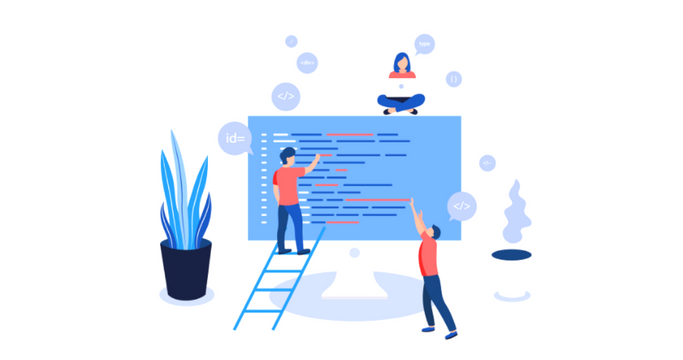Best Practices for Building a Scalable Application

Building a scalable application is essential to ensure that your software can grow with your business or user base. Scalability refers to the ability of an application to handle a growing number of users and increasing volumes of data without sacrificing performance or reliability. In this article, we will explore some key strategies and best practices for building a scalable application.
-
Plan for Scalability from the Beginning
The first step in building a scalable application is to plan for scalability from the beginning. This means considering how your application will handle a growing user base and increasing volumes of data. You should design your application architecture with scalability in mind, using technologies and approaches that can grow and adapt as your needs change.
-
Use Distributed Systems
Distributed systems are a key component of scalable applications. By using a distributed architecture, you can spread the load across multiple servers or nodes, allowing your application to handle more traffic and data. This can also improve reliability, as a failure in one node will not necessarily bring down the entire system.
-
Utilize Caching
Caching is an effective way to improve the performance and scalability of your application. By caching frequently accessed data or frequently executed code, you can reduce the number of requests to your database or application servers, reducing the load on your system and improving response times. Caching can also improve the user experience by reducing latency and improving the overall speed of your application.
-
Use Cloud Services
Cloud services can provide a cost-effective and scalable solution for hosting and managing your application. Cloud platforms such as Amazon Web Services, Microsoft Azure, and Google Cloud Platform offer a wide range of services, including storage, databases, and application hosting, that can help you scale your application without having to manage hardware and infrastructure.
-
Choose the Right Database
Choosing the right database is critical to building a scalable application. Different databases have different strengths and weaknesses when it comes to scalability, so it is important to choose a database that can handle your anticipated load and data volumes. Scalable databases such as NoSQL databases can provide a more flexible and scalable solution than traditional relational databases.
Importantly, to know more you can connect with application development company in India.
-
Use Asynchronous Processing
Asynchronous processing can help you handle a large volume of requests without sacrificing performance or reliability. By processing requests in parallel or in the background, you can reduce the response time of your application and improve the overall user experience. Asynchronous processing can also help you handle spikes in traffic and prevent your system from becoming overwhelmed.
-
Monitor and Optimize Performance
Monitoring and optimizing performance is critical to ensuring that your application remains scalable over time. By monitoring key metrics such as response time, CPU usage, and database performance, you can identify bottlenecks and optimize your system to handle increased load. This can include optimizing database queries, caching frequently accessed data, and tuning the performance of your application servers.
-
Use Load Balancing
Load balancing is an effective way to distribute traffic across multiple servers or nodes, improving the performance and scalability of your application. Load balancing can help you handle spikes in traffic, prevent server overloading, and ensure that your application remains available and responsive.
-
Automate Infrastructure
Automating infrastructure can help you scale your application more efficiently and effectively. By automating tasks such as server provisioning, configuration management, and deployment, you can reduce the time and effort required to scale your application. Automation can also improve the reliability and consistency of your infrastructure, reducing the risk of errors and downtime.
-
Test at Scale
Finally, it is important to test your application at scale to ensure that it can handle the anticipated load and user base. Load testing and performance testing can help you identify bottlenecks and potential issues before they become problems. By testing at scale, you can ensure that your application is ready to handle the demands of a growing user base.
Key benefits of building a scalable application
Building a scalable application has numerous benefits for businesses and organizations. Scalability allows software to grow and adapt to meet the needs of a growing user base and increasing volumes of data without sacrificing performance or reliability.
-
Improved User Experience
One of the primary benefits of building a scalable application is an improved user experience. Scalable applications are designed to handle a growing number of users and increasing volumes of data, which can help prevent slow response times, error messages, and other issues that can negatively impact the user experience. By building a scalable application, you can ensure that your users can access your software quickly and reliably, improving their satisfaction and engagement with your product.
-
Better Performance and Reliability
Scalable applications are also designed to perform well and remain reliable even under heavy loads. By using distributed systems, load balancing, caching, and other techniques, scalable applications can handle increased traffic and data volumes without sacrificing performance or reliability. This can help prevent downtime, errors, and other issues that can harm your business and reputation. Additionally,
-
Increased Revenue and Business Growth
Scalable applications can also help businesses increase revenue and grow their customer base. By providing a reliable, fast, and engaging user experience, businesses can attract and retain more customers, leading to increased revenue and growth. Scalable applications can also help businesses expand into new markets and regions, as they can easily handle increased traffic and data volumes from new users.
-
Cost Savings
Scalable applications can also provide cost savings for businesses. By using cloud services and distributed systems, businesses can avoid the costs of purchasing and maintaining expensive hardware and infrastructure. Cloud services also provide a pay-as-you-go model, allowing businesses to scale up or down as needed without incurring significant upfront costs.
-
Flexibility and Adaptability
Scalable applications are also designed to be flexible and adaptable. Moreover, allowing businesses to adjust to changing user needs and market conditions. By using scalable databases, distributed systems, and other techniques, businesses can easily add new features, support new platforms, and integrate with new technologies as needed.
-
Better Data Management
Scalable applications also provide better data management capabilities, allowing businesses to handle increasing volumes of data without sacrificing performance or reliability. By using scalable databases and distributed systems, businesses can manage large volumes of data more efficiently, ensuring that data is available when needed and can be analyzed and processed quickly.
-
Competitive Advantage
Finally, building a scalable application can provide businesses with a competitive advantage. Scalability is becoming increasingly important in today’s digital landscape, as businesses seek to attract and retain more users and handle increasing volumes of data. By building a scalable application, businesses can differentiate themselves from competitors and provide a better user experience, leading to increased revenue and growth.
-
Conclusion
Building a scalable application requires careful planning and implementation of a range of strategies and best practices. By designing your application architecture with scalability in mind, using distributed systems, caching frequently accessed data, utilizing cloud services, choosing the right database, using asynchronous processing, monitoring and optimizing performance, load balancing, automating infrastructure, and testing at scale, you can create an application that can grow and adapt to meet the needs of your business and users.
Remember, scalability is not a one-time process, and it requires ongoing monitoring and optimization to ensure that your application remains scalable over time. By following these best practices and continuously monitoring and optimizing your application, you can build a scalable application that can support your business and users as they grow and evolve.




